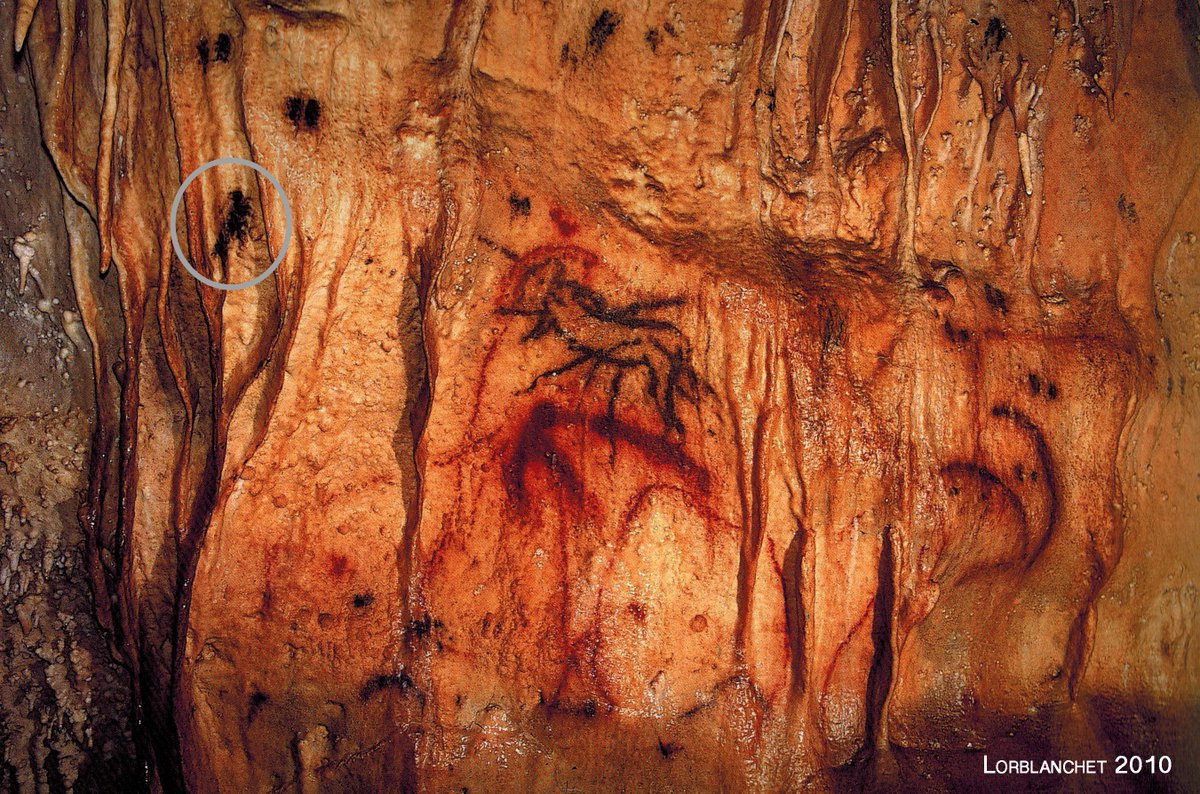
👋🤔💭Hi friends! Today is #FridayPaleoArt and we are going to cheer up this september, visting an open air site, recenlty discovered…⁉️
Site: #LaSalud
Place: Salamanca (Spain)
Motif: Horses
Chronology: Pre-Magdalenian
Site: #LaSalud
Place: Salamanca (Spain)
Motif: Horses
Chronology: Pre-Magdalenian

⁉️The site is located on the banks of the Tormes River, in the municipality of Salamanca (Spain). It consists of several rocky outcrops of slate. It was discovered in 2013 by A. Hernández Morán and M. Pantrigo. 👇😉 



📖Subsequently, the researchers D. Garate, J. Ríos-Garaizar, R. Pérez, R. Rojas and M. Santonja revealed a series of panels whose technique is identified with percussion-engraving and incised engraving (Garate et al. 2016). 

➡️Different motifs were identified. Four zoomorphic representations - two horses, a possible goat and a cervico-doral line - and several non-figurative ones. 





Recently, F. Guijarro and C. Centeno reported the existence of a new figure at the site. Subsequently, the team of researchers O. Rivero, J. Bécares and E. Álvarez located three figures: a two-headed horse and a cervico-dorsal line of another possible horse (Rivero et al. 2021). 

❗️They are horses drawn by the contour line, with a linear double mane, a muzzle in the shape of a "duck's beak", legs in frontal perspective and an absence of internal details. The figures are pecked and partially engraved.📸 

📚The two-headed horse could represent an animation of the animal, a way of representing the movement (up-and-down) of the head. These representations are characteristic of the Foz Côa sites, with similar figures at Penascosa, Fariseu and Canada do Inferno. 

👉The characteristics of the figures, both technical and formal, place them in the context of the representations from the Côa river attributed to the pre-Magdalenian phase.
Paula García Bustos (@gbustospaula)
End of thread!!!👋😉
Paula García Bustos (@gbustospaula)
End of thread!!!👋😉

• • •
Missing some Tweet in this thread? You can try to
force a refresh
















